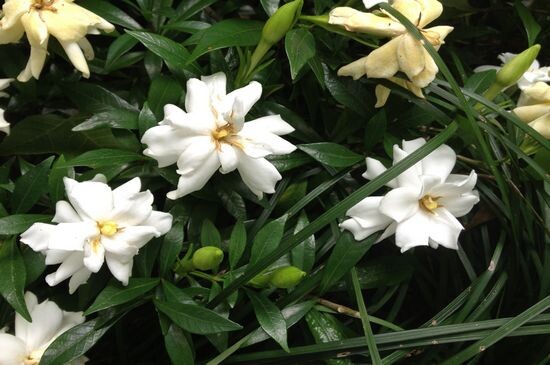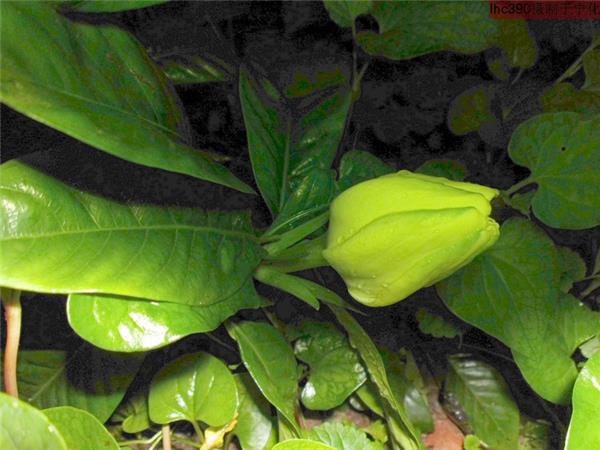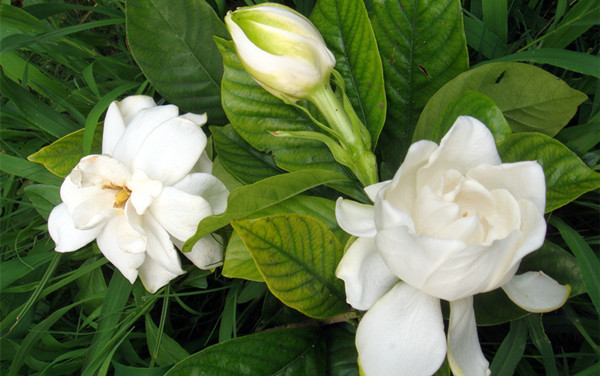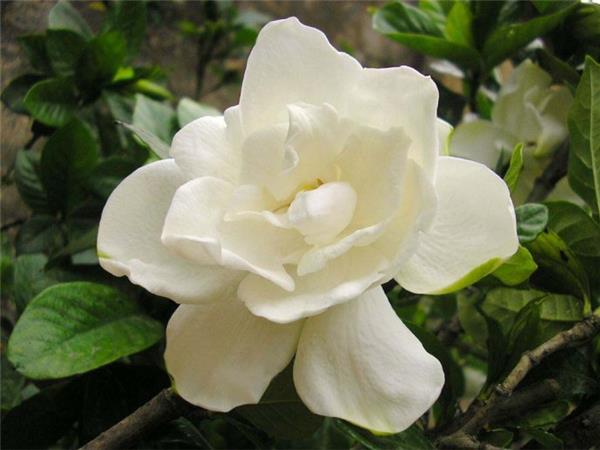How to grow Gardenia jasminoides how to cultivate Gardenia jasminoides
The flower shape of Gardenia jasminoides is beautiful and generous, the color is white and elegant, the leaf color is green and bright, and it has a good ornamental effect. It is the preferred tree species for greening gardens and courtyards, but in order to ensure its ornamental value, we should pay more attention to it in maintenance.

Propagation mode of Gardenia jasminoides
Seed reproduction: it can be harvested every autumn and winter when the peel of Gardenia jasminoides turns yellow or light red. Gardenia jasminoides are collected and dried in the sun or air, and then stored and set aside. From February to March of the following spring, cut the pericarp with scissors, take out the seeds, soak them in warm water of 40 degrees for about 24 hours, then rub off the dried seeds and impurities, remove the sunken and full seeds and dry them. When sowing, sprinkle the seeds with plant ash evenly in the sowing ditch, cover the soil slightly, cover it with straw, and water it to make the soil moist.
Cuttage propagation: cuttings can be propagated in spring and autumn. Select 1-2-year-old strong branches, cut off the leaves, leaving only the petiole, cut into cuttings about 20cm length. According to the specification of row spacing 12cm and plant spacing 5cm, the cuttings are obliquely inserted into the ready seedbed, and the cuttings are buried in the soil about 2ppm 3. The soil around the cuttings is pressed slightly and watered to keep the soil moist. After the cuttings took root, after about one year of growth, the cuttings could be removed and planted the following year.
Ramet propagation: ramet propagation is mostly carried out in spring. Select the sprouting tillers with high 15~25cm from the roots of Gardenia jasminoides, then plane the soil around the roots of Gardenia jasminoides to reveal the roots, and then truncate the roots connected between the sprouting plants and the mother plants, and retain the roots of the sprouting plants as far as possible. The sprouting plants can be planted after they are removed.

Matters needing attention in the Culture of Gardenia jasminoides
Cultivation and planting: planting can be carried out on cloudy days from March to April. When the growth of sowing seedlings or cuttings is above 20cn, it can be transplanted and planted. The acupoints were dug according to the specification of 1mX1m, and the length, width and depth of the acupoints were all 40cm. After digging the hole, mix the broken topsoil with green manure, soil mixed fertilizer and human manure, and backfill when transplanting. One plant was planted in each hole, the seedlings were slightly raised during transplantation, and the root system of Gardenia jasminoides was naturally extended. When returning to the soil, the filling is slightly higher than the ground, pouring enough water to fix the root.
Fertilizer and water management: after planting, weeding and topdressing were ploughed twice in spring and summer, with 30 tons of human and animal manure, barnyard manure or compost per hectare. When Gardenia jasminoides is in full bloom in summer, 2250g potassium dihydrogen phosphate is used per hectare. To water 50kg. Foliar spray. Before and after the Beginning of Winter, ammonium bicarbonate 75-150 kg per hectare, superphosphate 90kg, potassium chloride 75kg
Pruning and deep ploughing: after picking Gardenia jasminoides, cut off the shade branches and sterile branches, so that the water gardenia tree is in the shape of an umbrella, ventilated and transparent, which can reduce diseases. After the cut branches and leaves were removed, the gardenia orchard was ploughed once, and the depth was not less than 15cm. It can enhance the permeability and permeability of soil, enhance the ability of drought resistance, destroy the living environment of overwintering pests and reduce the population density in the following year.

Disease control: gardenia jasminoides is sprayed once in the bud stage, in the early flowering stage and in the middle period of fruiting, and insecticides such as green Pepsi, aphid lice net, Shachongshuang, liershu and other insecticides can be sprayed in sunny days; the first two sprays can be combined with foliar fertilizer; chemicals should be used alternately to avoid drug resistance of pests; spray should be thoroughly sprayed, do not miss spray, less spray, otherwise the insecticidal effect can not be achieved. Lack of fertilizer or other improper management measures can easily lead to low disease resistance of trees. Comprehensive measures such as reclamation, pruning and increasing application of phosphate fertilizer (or potash fertilizer) can be taken to improve disease resistance.
Harvest and processing: the areas below 300m above sea level are harvested after "the Beginning of Winter", and the areas with elevations of 300,000m are harvested from "the Beginning of Winter" to "Lesser Snow". The harvest is too early, the fruit is not mature, the yield is low, the quality is poor; the harvest is too late, drying is difficult, and it is easy to rot. When harvesting, usually pick by hand, do not break branches. When picking, no matter big or small, green or yellow, all are picked at one time, and there is no need to pick them in batches. The fresh fruit of Gardenia jasminoides was picked and transported back, dried in the sun after removing the sundries on the stalk or dried in a gentle fire, regained moisture for 3-5 days, and then baked again for 1-2 days. After all dry, take out and spread out to cool.

Gardenia jasminoides in addition to can be used for ornamental, but also a very good traditional Chinese medicine, so breeding water gardenia at home, can be regarded as a thing with more than one stone, with a relatively high breeding value.
- Prev

What does the carnation mean? the flower language represented by the carnation.
What does the carnation mean? the flower language represented by the carnation.
- Next

Introduction to the cultivation techniques and construction methods of Sapium sebiferum
Introduction to the cultivation techniques and construction methods of Sapium sebiferum
Related
- Wuhan Hospital Iron Tree Blooming Result Was Instantly Frightened by the Gardener Master
- Which variety of camellia is the most fragrant and best? Which one do you like best?
- What is the small blue coat, the breeding methods and matters needing attention of the succulent plant
- Dormancy time and maintenance management of succulent plants during dormancy
- Minas succulent how to raise, Minas succulent plant pictures
- What are the varieties of winter succulent plants
- How to raise succulent plants in twelve rolls? let's take a look at some experience of breeding twelve rolls.
- Attention should be paid to water control for succulent plants during dormant period (winter and summer)
- Watering experience of twelve rolls of succulent plants
- Techniques for fertilizing succulent plants. An article will let you know how to fertilize succulent plants.

